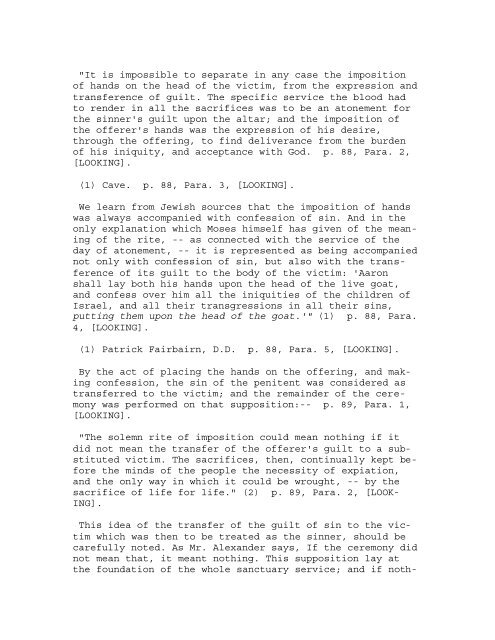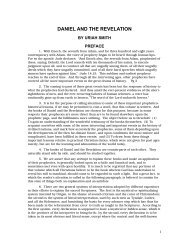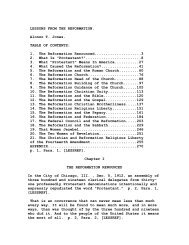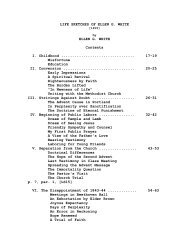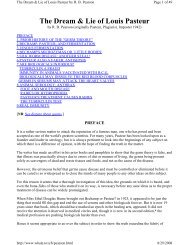LOOKING UNTO JESUS OR CHRIST IN TYPE AND ANTITYPE. BY ...
LOOKING UNTO JESUS OR CHRIST IN TYPE AND ANTITYPE. BY ...
LOOKING UNTO JESUS OR CHRIST IN TYPE AND ANTITYPE. BY ...
Create successful ePaper yourself
Turn your PDF publications into a flip-book with our unique Google optimized e-Paper software.
"It is impossible to separate in any case the imposition<br />
of hands on the head of the victim, from the expression and<br />
transference of guilt. The specific service the blood had<br />
to render in all the sacrifices was to be an atonement for<br />
the sinner's guilt upon the altar; and the imposition of<br />
the offerer's hands was the expression of his desire,<br />
through the offering, to find deliverance from the burden<br />
of his iniquity, and acceptance with God. p. 88, Para. 2,<br />
[<strong>LOOK<strong>IN</strong>G</strong>].<br />
(1) Cave. p. 88, Para. 3, [<strong>LOOK<strong>IN</strong>G</strong>].<br />
We learn from Jewish sources that the imposition of hands<br />
was always accompanied with confession of sin. And in the<br />
only explanation which Moses himself has given of the meaning<br />
of the rite, -- as connected with the service of the<br />
day of atonement, -- it is represented as being accompanied<br />
not only with confession of sin, but also with the transference<br />
of its guilt to the body of the victim: 'Aaron<br />
shall lay both his hands upon the head of the live goat,<br />
and confess over him all the iniquities of the children of<br />
Israel, and all their transgressions in all their sins,<br />
putting them upon the head of the goat.'" (1) p. 88, Para.<br />
4, [<strong>LOOK<strong>IN</strong>G</strong>].<br />
(1) Patrick Fairbairn, D.D. p. 88, Para. 5, [<strong>LOOK<strong>IN</strong>G</strong>].<br />
By the act of placing the hands on the offering, and making<br />
confession, the sin of the penitent was considered as<br />
transferred to the victim; and the remainder of the ceremony<br />
was performed on that supposition:-- p. 89, Para. 1,<br />
[<strong>LOOK<strong>IN</strong>G</strong>].<br />
"The solemn rite of imposition could mean nothing if it<br />
did not mean the transfer of the offerer's guilt to a substituted<br />
victim. The sacrifices, then, continually kept before<br />
the minds of the people the necessity of expiation,<br />
and the only way in which it could be wrought, -- by the<br />
sacrifice of life for life." (2) p. 89, Para. 2, [LOOK-<br />
<strong>IN</strong>G].<br />
This idea of the transfer of the guilt of sin to the victim<br />
which was then to be treated as the sinner, should be<br />
carefully noted. As Mr. Alexander says, If the ceremony did<br />
not mean that, it meant nothing. This supposition lay at<br />
the foundation of the whole sanctuary service; and if noth-


